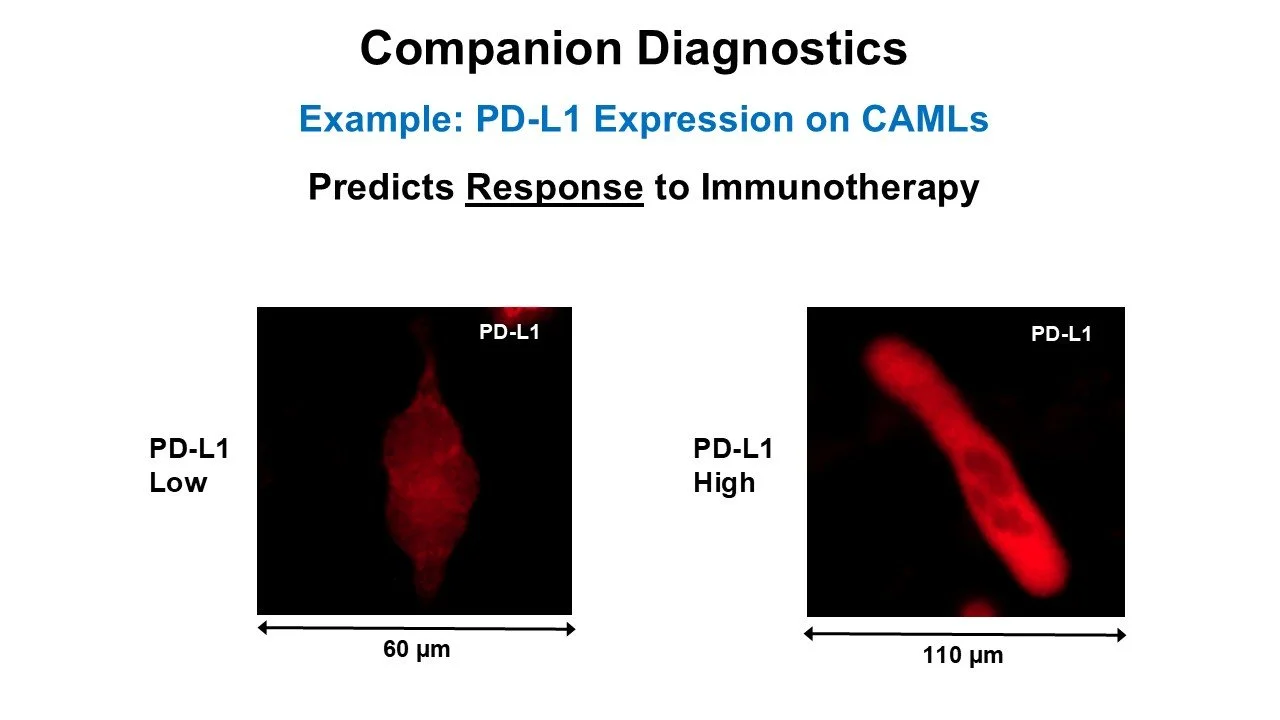IS MY TREATMENT WORKING?
Early Determination of Response to Therapy
A baseline blood sample is taken before therapy. A second blood sample is taken about 30 days after the therapy. The response to therapy is determined by comparing the results of the two samples:
Not working: Any CTCs detected in the second sample
Not working: CAML size or number increased in the second sample
Some benefit from therapy: CAML size or number decreased in the second sample
Ideal case: no CAML or CTC in the second sample
A blood test for companion diagnostics is simpler and cheaper than tissue biopsy. CAMLs contain tumor markers.
CAMLs are ideal for companion diagnostics because they are found in
All cancers
All stages of cancer
More than 30 drug targets have been developed by CreatvBio. Some examples are:
PD-L1, PD-L2
HER2
CCR5
CXCR4
VEGFR1-2
Companion Diagnostics
Many cancer drugs target specific markers on the surface of the tumor. If the tumor does not express the marker, then the patient is not expected to respond to the drug. The test to determine effective use of the therapeutic drug for a patient is called companion diagnostics.
We can develop a simple blood test for companion diagnostics for the drug.
Companion Diagnostics for Immunotherapy
An example of companion diagnostic data for immunotherapy for lung cancer shows that Creatv Bio's blood test can provide important information whether the patient will benefit from immunotherapy.
This data was taken after chemoradiation therapy (CRT). The data shows that CRT can change the PD-L1 expression of the tumor.
PD-L1 expression can be changed under a variety of situations. Another example is shown in Sequential Monitoring of Therapy below.





